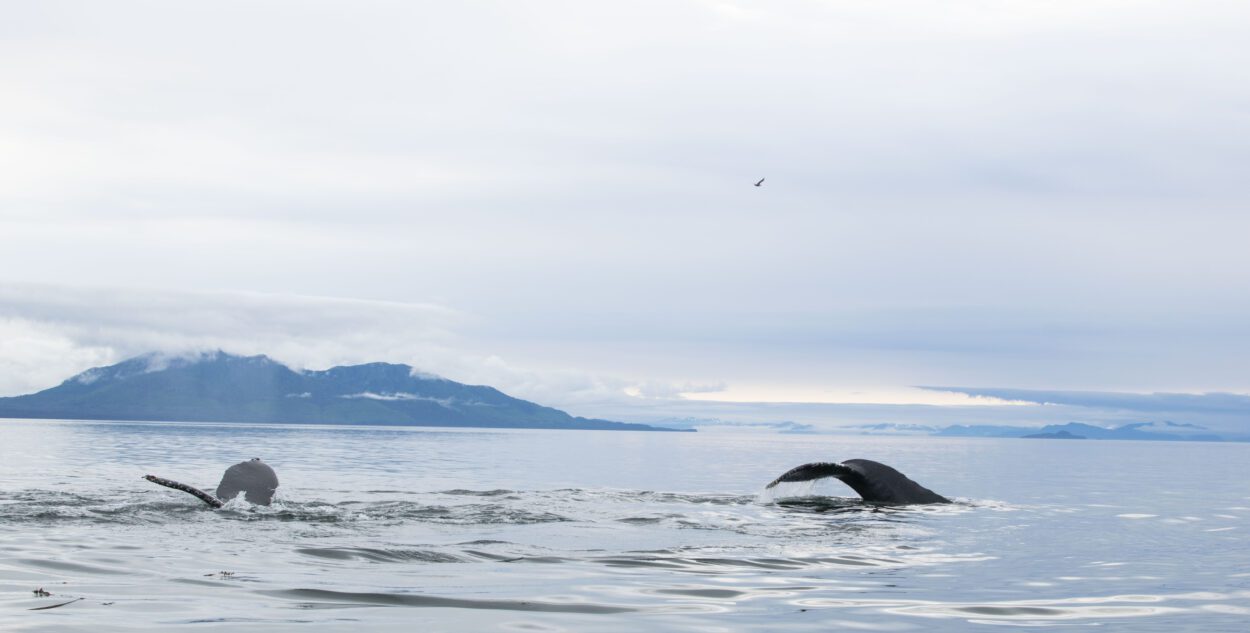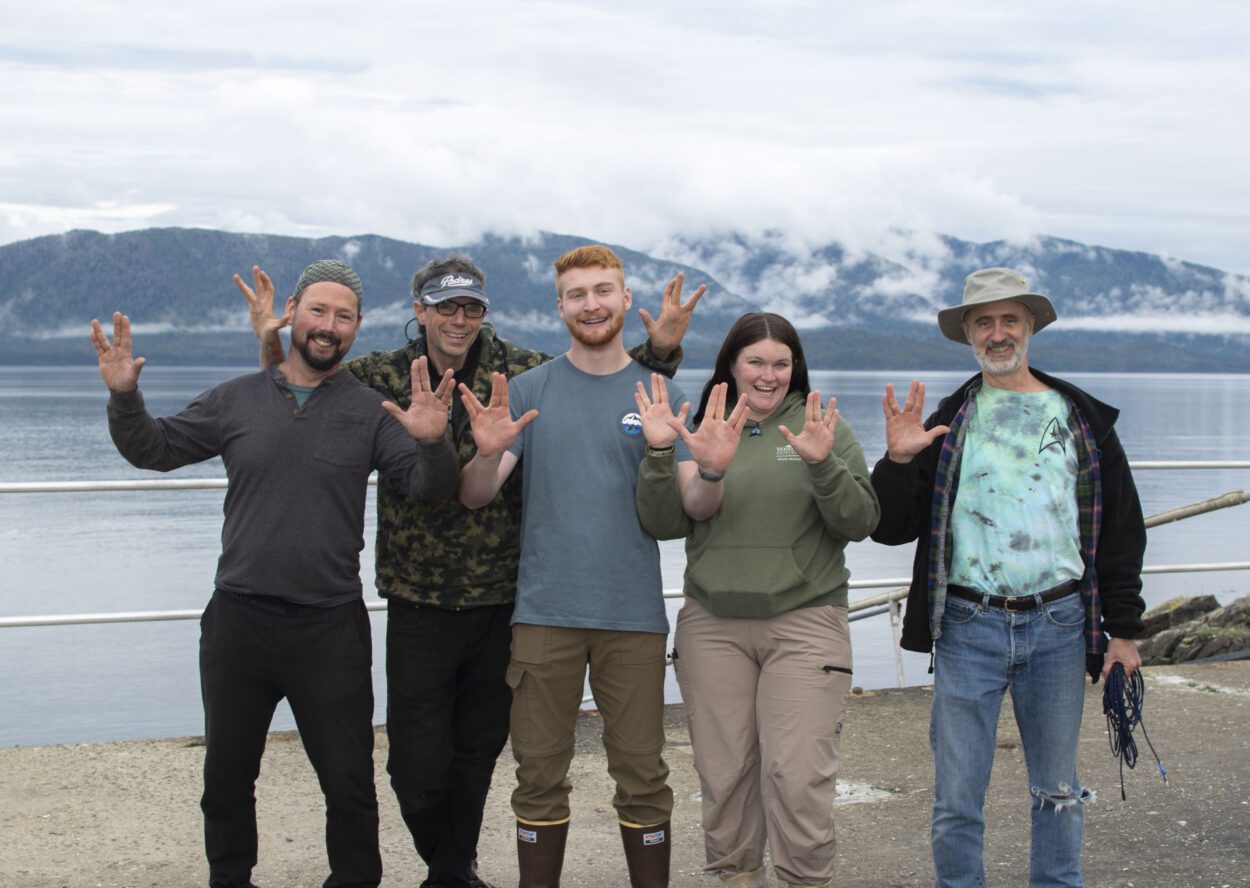
(Photo by Shelby Herbert/KFSK)
Researchers from an organization that seeks out extraterrestrial life camped out at a remote lighthouse in Southeast Alaska for the better part of the summer, but they weren’t out there looking for little green men. They were there to look for — and listen to — the humpback whales that swarm the waters of the Frederick Sound.
KFSK’s Shelby Herbert hopped on a boat to learn more about what life beneath the waves could tell us about the life that could exist among the stars.
I’m sailing toward the Five Finger Lighthouse on a clammy, cold July morning with a couple whale researchers. The waves are too high for “Warp Speed,” but we’re making decent progress on an aluminum speedboat.
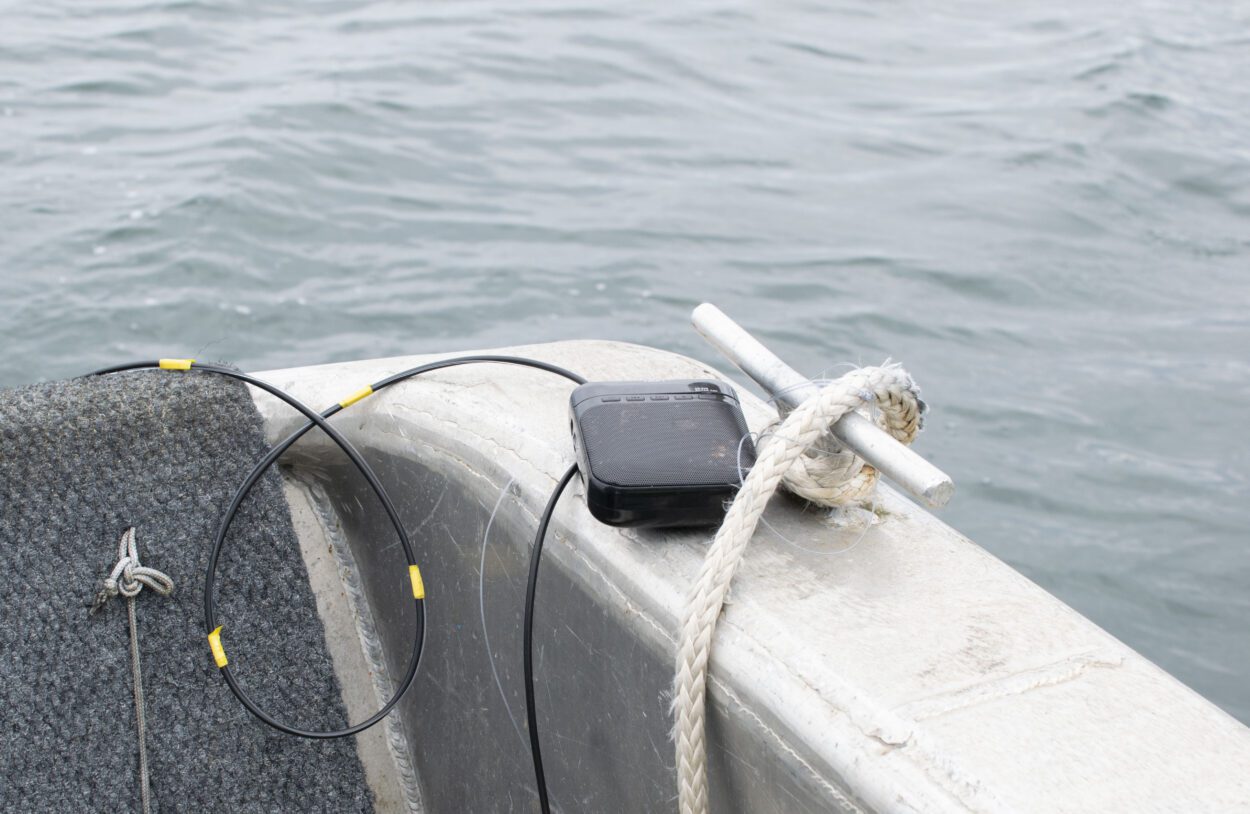
The charcoal-colored waters are cold and deep. Not totally unlike the vacuum of outer space. But at least here, we know — for sure — that there are living things teeming beneath the surface.
Our voyage is interrupted when the skipper, Josef Quitslund, sees something moving in the distance. He slowed down and cut the engine, then tossed a contraption that looks something like a baby monitor into the water.
The device — something called a hydrophone — is picking up humpback whale sounds. There’s definitely something going on down there. Then, almost out of nowhere, several adult humpbacks rushed to the surface, mouths agape, scooping up a school of herring.
They were doing something called bubble-net feeding. That’s a kind of cooperative hunting strategy where groups of whales get together to blow complex configurations of bubbles that allow them to trap their prey.
One smaller whale lagged behind. Quitslund’s wife, biologist Stephanie Hayes, pointed out a calf hanging back — rolling back and forth in a patch of kelp.
“He’s playing with kelp!” said Hayes, gesturing at the calf. “He’s giving himself a kelp bath!”
The whales finished their breakfast and we continued on to the lighthouse. The crew took me to their leader: premier whale behavioral scientist, Fred Sharpe. He’s helping coordinate Whale-SETI, a 15-year project spearheaded by the Search for Extraterrestrial Intelligence Institute.
“Frederick Sound is this incredible solar-powered krill factory,” said Sharpe. “It brings whales — in some years, by the hundreds. And we’re a couple mountain ranges back from the open ocean, so we’re shielded from the ship noises.”
The team needs that relative quiet so they can listen carefully to the whales in the surrounding waters.
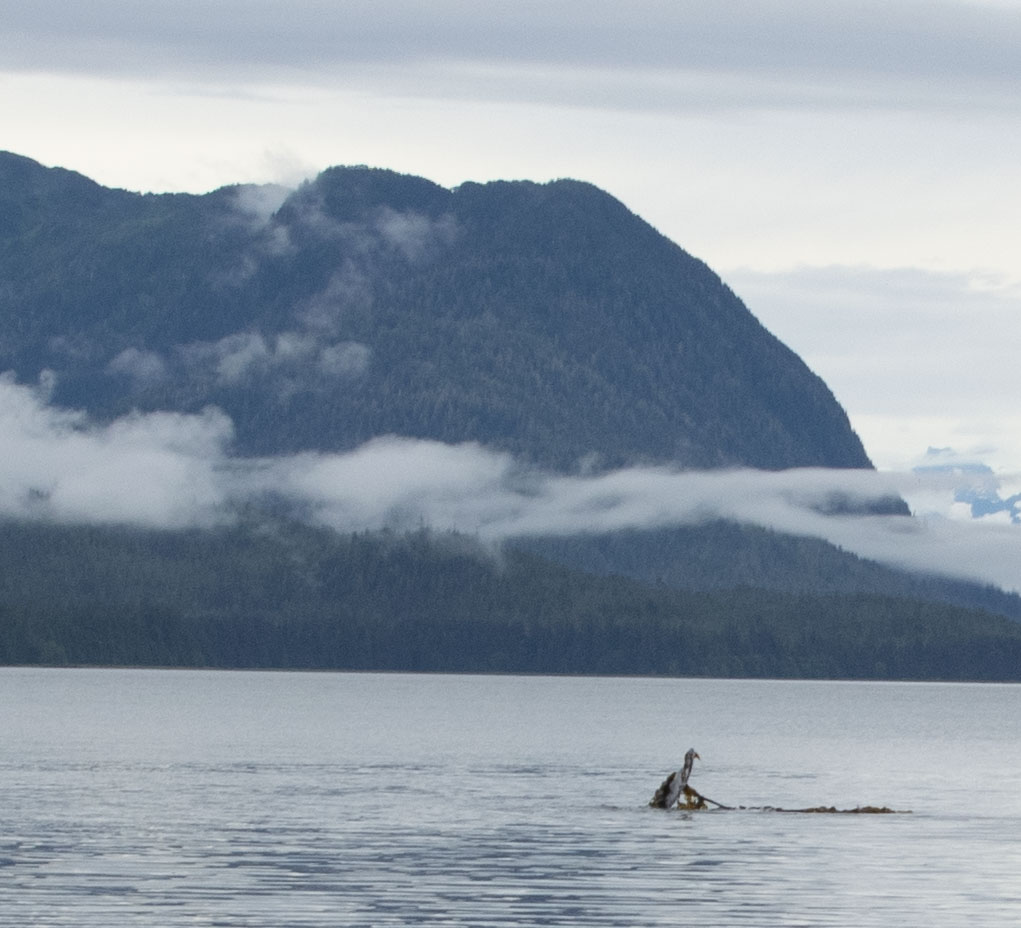
Sharpe and his team have been trying to crack the code of humpback whale communication for many years now, and he thinks they’re getting close. He’s part of a research group that “talked” to a female humpback whale named Twain by playing whale noises back to her with an underwater speaker.
“We had an event where we described a 20 minute interaction with a whale right up by the lighthouse, where we exchanged 36 signals back and forth: one of these ‘throp’ calls. Throp call is one of their basic social sounds that the humpback whales give. The social sounds are kind of like… They’re not like a song… They’re more like, sort of social chatter — a diverse set of social chatter, but shows some stability over time and space.
Acoustic engineer Joe Olson is next in line to greet us, wearing an ultra on-the-nose Star Trek sweatshirt.
“Yeah, I was a volunteer crew on this Star Trek fan film for like three years,” said Olson.
He says encounters like the one with Twain might inch us closer to understanding extraterrestrial intelligence. But he says they can’t approach the experiment like they’re trying to learn a language on human terms.
“We only see what we’re looking for,” said Olson. “And so, with the communication of the humpbacks, we’re only going to figure out what it is that we’re looking for, right? It’s the same with aliens. For all we know, there’s aliens sending neutrino signals. But… We have no way to manipulate neutrinos. And they may have been beaming things out as saying: ‘Hey, look, look, look!’ And there are just all these neutrinos zipping through us — [but] we don’t have any idea what’s going on…”
Another group of SETI researchers were scheduled to arrive at the lighthouse in just a couple of days, and Sharpe’s team had much to do to prepare.
They were set up hydrophones on almost every corner of the island. But those devices weren’t just picking up whale noises. Olson lead me to a cliff where he had installed a hydrophone.
“We’re just hearing bivalves over here. Stuff that’s stuck to the walls… barnacles, mussels, whatever,” said Olson, before giving his best bivalve imitation.
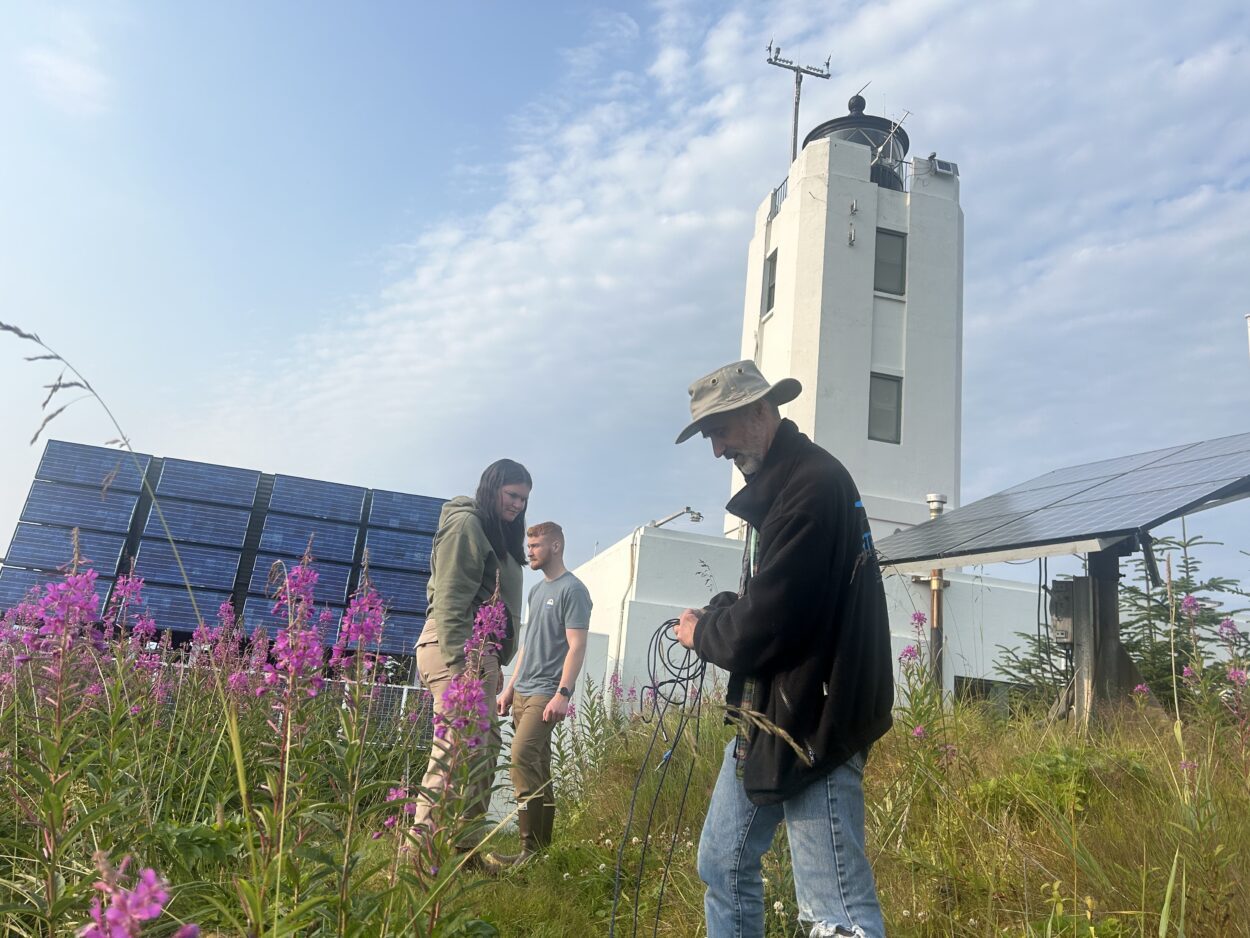
Lighthouse keeper Don Merrill has watched this team of scientists scurry around his home with strange equipment for several days now. On the alien question: he’s got his doubts.
“Ugh… How truthful do I need to be?” asked Merrill. “Do you want it from a religious standpoint, or from a metaphysical standpoint? When you’re bringing up aliens, I am quite a skeptic.”
But his face lights up when he’s asked how he feels about the hydrophone speakers strewn across his house.
“That’s COOL,” said Merrill. “I come out here sometimes and I’ll just turn the sound up, just because I want to know what’s going on. I grew up on the ocean, [as a] fishermen. I had no idea that was that much sound down there. That is a wild place! I’ve seen a lot, but I’ve never… heard anything like this, and it’s… It’s really opened my eyes.”
Inspiring that kind excitement is part of what the group is aiming for with this project. Olson says by holding up the possibility of communicating with animals, they can get people to care about them.
“When we see something that we understand or we love or we connect with, we’re more likely to try to protect them or to respect them,” said “When we can communicate with them, when we can see that they communicate, that’s one more thing that’s like us. I think that’s just going to help with overall conservation. And who knows, maybe we’ll crack the code, right? If there’s a code to be cracked, maybe Fred will be the one to crack that code.”
They’re not quite there yet. But at the end of the summer research session, Sharpe said he’s happy with the diversity of noises and behaviors they added to their repertoire. He said he’s excited to continue attempting to translate humpback whale language to make us feel a little less alone on the planet — if not yet, the universe.
The Whale-SETI research at the Five Finger Lighthouse was conducted under NOAA permit 26633.
